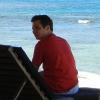http://translate.goo...tor=RSS-3208001
Will we soon slow the effects of time? French researchers have managed to restore their youth to cells from donors older than 100 years, the reprogramming stage of stem cells. Far from being benign, their discovery demonstrates that the aging process is reversible.
This work on the ability to erase the signs of aging cells, published in the journal Genes & Development November 1, marking another step towards regenerative medicine to correct a disease, says Jean-Marc Lemaitre of the Institute Functional Genomics of the University of Montpellier and head of research. Another important market: better understanding of aging and to correct its pathological aspects, according to researcher at Inserm
.
Older cells were reprogrammed in vitro into pluripotent stem cells [with several potential] and thus regained their youth and the characteristics of embryonic stem cells. They can differentiate again in cells of all types (neurons, heart cells, skin, liver ...) after the treatment of "youth" concocted by the researchers.Since 2007, researchers showed that they could reprogram adult human cells into pluripotent stem cells with properties similar to embryonic stem cells
.
This reprogramming from adult cells avoids the criticism of the use of embryonic stem cells. But until then, the reprogramming of adult cells came up against a limit, senescence, the ultimate point of cellular aging. The team of Jean-Marc Lemaitre has crossed that limit.REPAIR BODIES In Focus
Dasn practice, the researchers first fold of skin cells (fibroblasts) from a donor of 74 years to reach senescence characterized by the cessation of cell proliferation.
Ils ont ensuite procédé à la reprogrammation in vitro de ces cellules.
They then proceeded to the reprogramming of these cells in vitro. As this was not possible with conventional preparation containing four genetic factors (OCT4, SOX2, KLF4 and MYC C), they have added two more (NANOG and LIN28)..
With this new "cocktail" of six ingredients, the reprogrammed senescent cells have reacquired the characteristics of pluripotent stem cells of embryonic type, retaining no trace of their earlier age. "The signs of aging cells have been erased, and iPSC stem cells that we obtained can produce functional cells of all types with proliferative capacity and longevity, "said Jean-Marc Lemaitre .The researchers then tested their cocktail of cells older than 92, 94, 96 to 101 years, successfully including the trees. "The age of the cells is definitely not a barrier to the reprogramming" he says.
.
This work opens the way to end the use of reprogrammed cells as ideal source of adult cells tolerated by the immune system to repair organs or tissues in elderly patients, the researcher adds













































